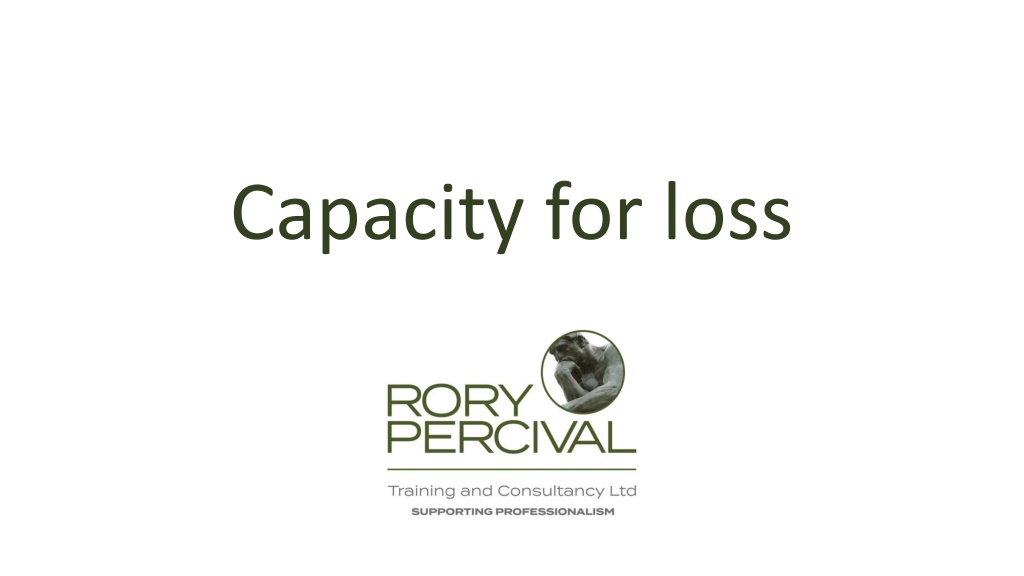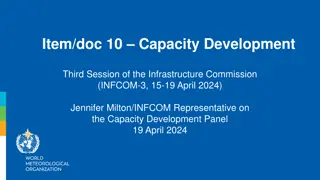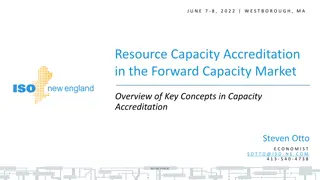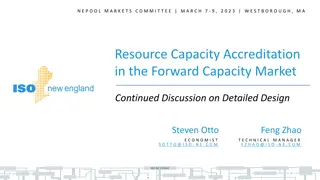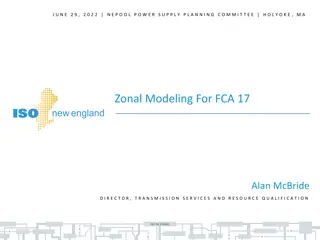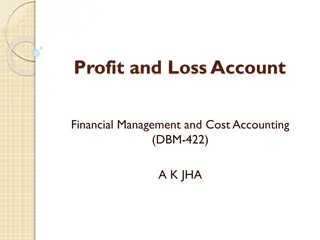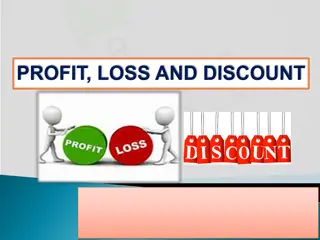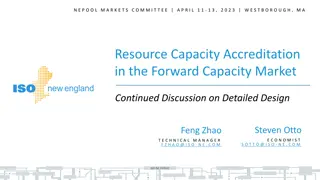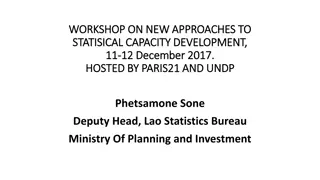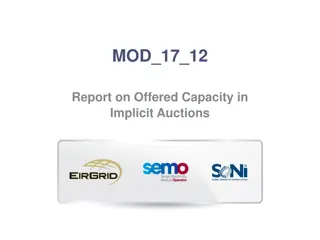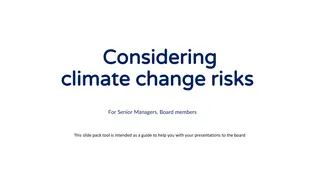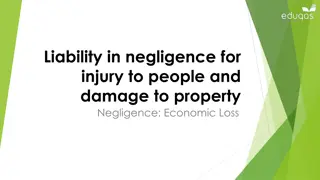Capacity for Loss - Understanding the Risks
Examine the concept of capacity for loss, crucial for assessing risk tolerance in investments. Learn what it entails, why it's vital, and how to conduct proper assessments to safeguard client interests.
Download Presentation

Please find below an Image/Link to download the presentation.
The content on the website is provided AS IS for your information and personal use only. It may not be sold, licensed, or shared on other websites without obtaining consent from the author.If you encounter any issues during the download, it is possible that the publisher has removed the file from their server.
You are allowed to download the files provided on this website for personal or commercial use, subject to the condition that they are used lawfully. All files are the property of their respective owners.
The content on the website is provided AS IS for your information and personal use only. It may not be sold, licensed, or shared on other websites without obtaining consent from the author.
E N D
Presentation Transcript
Agenda What it is What it isn t/poor practice Why it s important Fact-finding Analysis Summary actions
Learning objectives Understand capacity for loss Consider good practice examples Review your approach
Capacity for loss By capacityfor loss we refer to the customer s ability to absorb falls in the value of their investment. If any loss of capital would have a materially detrimental effect on their standard of living, this should be taken into account in assessing the risk that they are able to take FSA Finalised Guidance 11/5
What it isnt/poor practice Confusing with risk profile Blending with risk profile to arrive at single risk level Right question/wrong answer No assessment Assessment but then ignored Unsubstantiated comment in suitability report
Fact-finding Don t ask the client what they cannot answer, ask them what they can (or can with assistance) 1. Income needed to maintain standard of living Not just essential expenditure lifestyle and discretionary too 2. How this will vary over time Income need typically decreases over time
COBS 19.1.6G (3) A firm should only consider a transfer, conversion or opt-out to be suitable if it can clearly demonstrate, on contemporary evidence, that the transfer, conversion or opt-out is in the retail client s best interests. (4) To demonstrate (3), the factors a firm should take into account include: (a) the retail client s intentions for accessing pension benefits; (b) the retail client s attitude to, and understanding of the risk of giving up safeguarded benefits (or potential safeguarded benefits) for flexible benefits, taking into account the following factors: (i) the risks and benefits of staying in the ceding arrangement; (ii) the risks and benefits of transferring into an arrangement with flexible benefits; (iii) the retail client s attitude to certainty of income in retirement; (iv) whether the retail client would be likely to access funds in an arrangement with flexible benefits in an unplanned way; (v) the likely impact of (iv) on the sustainability of the funds over time; (vi) the retail client s attitude to and experience of managing investments or paying for advice on investments so long as the funds last; and (vii) the retail client s attitude to any restrictions on their ability to access funds in the ceding arrangement;
Fact-finding: client views on security v flexibility Secure income products (annuities): Provide secure, level or increasing pension for life Uses fund in exchange for income Can opt to include spouse s pension on death (amount optional) Tax-free lump sum (up to 25%) available if you want Doesn t require managing or reviewing Generally, benefits and taxation position less likely to change Higher income available if in poor health or have certain lifestyle (eg smoker) Flexible income products (drawdown): No security of income; income depends on investment returns and charges Tax-free lump sum (up to 25%) can be taken without having to take income Flexibility to take further (taxed) lump sums Flexibility to increase, decrease, stop and start income Hence, need to review and manage income, lump sum and investment return levels to ensure income is sustainable throughout life Unused fund passed to beneficiaries on death (usually tax-free if taken as a fund)
Fact-finding: client views on security v flexibility What is your view now? What do you think your view will be in your later years, say 80s and 90s? What is your view on the risks and benefits of having an annuity? What is your view on the risks and benefits of having a flexible personal arrangement? What is your view on the certainty of income in retirement? You have outlined what additional amounts you will need in the future, over and above your regular income. Do you think there is the possibility that you will need to access further funds from a flexible personal arrangement? If so, please provide details What is your experience of, and attitude towards, paying for advice on investments so long as the funds last? What is your view on the limitations of access from an annuity (ie that you can have a tax-free lump sum and secure income but no further access or flexibility) Would you like to leave assets to your children? If so, how much? Does this include the value of your pension scheme? How important is this given that this will reduce the level of benefit you can have in retirement?
Analysis Younger clients What s their ability to absorb falls in the value of their investment [and whether] any loss of capital would have a materially detrimental effect on their standard of living ? Approaching/in retirement For some, clearly have (or don t have) capacity for loss For most cash-flow planning with stress testing
Cash-flow planning Stochastic: stress testing built in Deterministic: must stress-test solution
Stress-testing Market crashes Simulated crashes Year one maximum loss as per risk profile Client-specific concerns (eg high inflation, prolonged recession)
Solutions (if plan A doesnt work) More cautious investments? Save/invest more Retire later Part-time work Scale down objectives Take more risk . or not
Centralised Retirement Proposition (CRP) Safety first Sustainable withdrawal rate (SWR) Pots or buckets Natural income Security and flexibility
Summary actions Ensure you are using an appropriate fact-finding approach Use cash-flow planning to model client outcomes Agree firm-level standard stress test(s) Stress-test cash-flow plan to test capacity for loss
